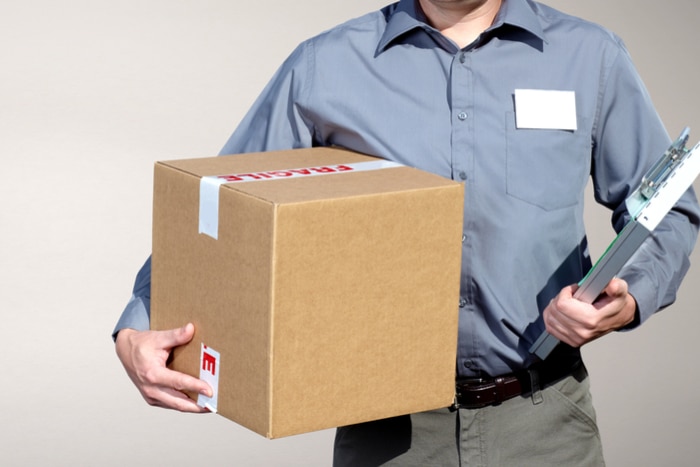Throughout history, new technologies have driven new shopping behaviours; from the birth of mail order catalogues and TV shopping channels through to contactless payments and m-commerce.
Today‘s technological advances are fuelling increasingly rapid change in consumer habits and expectations. The rise of mobile apps as the default purchasing tool for consumers, combined with improvements in supply chain and operational logistics, have helped to make on-demand purchases the new norm for a growing number of shoppers.
On-demand retail truly began with digital purchases — the ability to buy and immediately access any song, movie or app that you wanted at the touch of a screen has conditioned us all to expect the same speed and ease of use for non-digital purchases.
Prepared food was the next natural step for on-demand, with takeaway delivery firms like Just Eat and Deliveroo giving consumers far greater choice and flexibility. Having become accustomed to this on-demand model, today‘s shoppers are increasingly expecting traditional retail to offer an on-demand delivery option.
Grocery shopping is set to be the next major sector to fully embrace the on-demand model with some of the world‘s biggest players in this space launching offerings in the last year.
Most notably, Amazon announced the acquisition of Whole Foods Market earlier this year for $13.7 billion (£10.7 billion), and has already begun rolling out the grocer‘s products on its on-demand delivery platform, Prime Now.
In the UK, Amazon also announced a high-profile partnership with Morrisons in November of last year, while Tesco launched Tesco Now — a one-hour grocery delivery service for customers in central London, with logistics support from Quiqup.
In the fiercely competitive grocery space, it is clear that big-name brands understand the need to embrace new technologies and meet consumer expectations around on-demand delivery, or they risk being left behind.
However, the grocery sector is just the next milestone for on-demand. As consumers become ever more accustomed to getting online purchases delivered within one or two hours, other retail sectors will need to join the on-demand adoption curve.
Ever on trend, the fashion industry – itself one of retail‘s fastest-growing verticals – looks set to be Europe‘s latest retail sector to embrace new methods of reaching its customer base. Both at a luxury and mainstream level, major fashion players in the UK have begun adopting an on-demand model.
At the end of last year, MatchesFashion.com began offering a 90-minute and one-hour delivery service to its customers in Greater London, with a nominal additional delivery charge. Customers now have the option to receive clothes ordered within 90 minutes of making a purchase, or to receive them in a specific one-hour timeslot within a set number of days.
Meanwhile, rapidly-rising European fashion retailer Zalando recently launched several services in its native Germany. Among other customer innovations, the company now offers a return-on-demand service, allowing customers to have their returns picked up within two hours of making a request, improving the customer journey significantly, bolstering their omni-channel retail offering and encouraging more frequent orders per customer.
With phones, tablets, wearables and laptops increasingly seen as essential daily items, it‘s likely that we‘ll see a growing appetite for on-demand with the consumer electronics sector as well. Once again Amazon is leading the way here, with consumer electronics included as part of its Prime Now platform (ranging from new computers to the latest video games). Other services, such as iSmash, offer one-hour pickups on broken or damaged mobile phones or gadgets in London.
Since the consumer electronics sector is dominated by digital to begin with (according to PWC, 56 per cent of UK shoppers already prefer to make consumer electronics purchases online), this is one area that is already ready for further innovation.
It‘s particularly interesting to see that, with the on-demand sector having been normalised first by prepared food and increasingly by the grocery sector, consumers and companies alike are moving beyond just consumable goods towards more significant – and pricier – purchases.
At Quiqup, we‘ve seen this in our own order patterns: customers usually start by using the service to order food for the first order and then, once they‘ve become used to the model, begin using it for a broader range of pickups.
This suggests that on-demand shopping is actually a learned behaviour and that, once consumers start to experiment with on-demand in the form of takeaway or grocery delivery, they will quickly come to expect it for other purchases too. Retailers across all sectors should therefore be thinking carefully about how they can start to integrate an on-demand option into their existing omnichannel strategy.
As always in retail, those businesses that can use this emerging trend to give increasingly-demanding consumers what they want, when and how they want it, will give themselves the best chance of surviving and thriving in an ever-more uncompromising retail landscape.
Tim Linssen is Co-Founder and Head of Product at Quiqup
Click here to sign up to Retail Gazette‘s free daily email newsletter


















